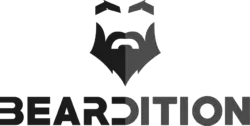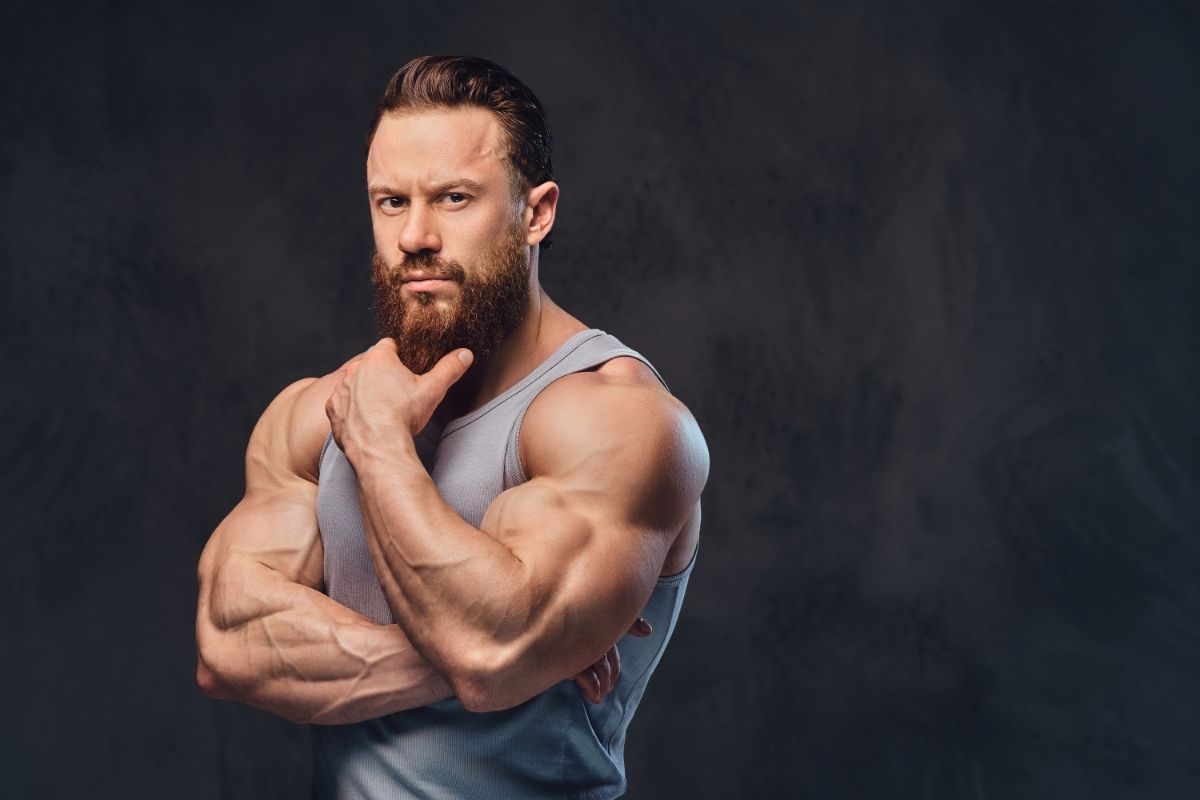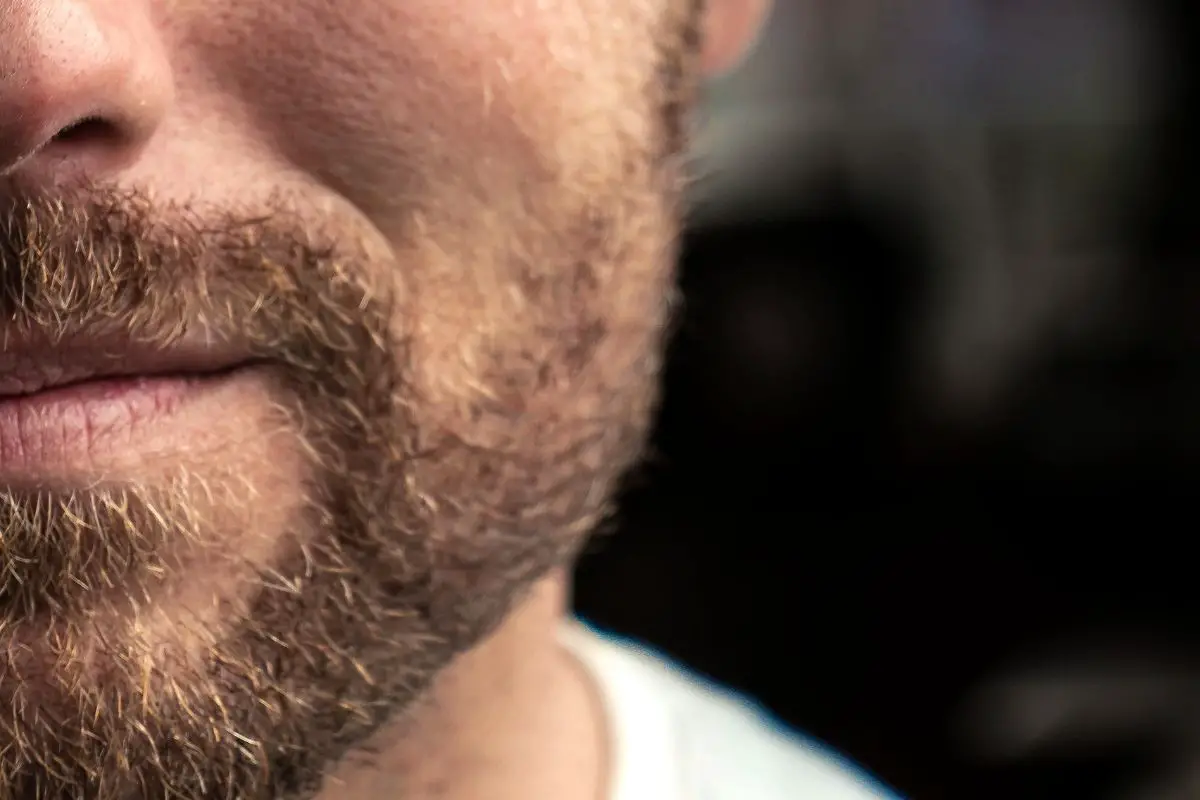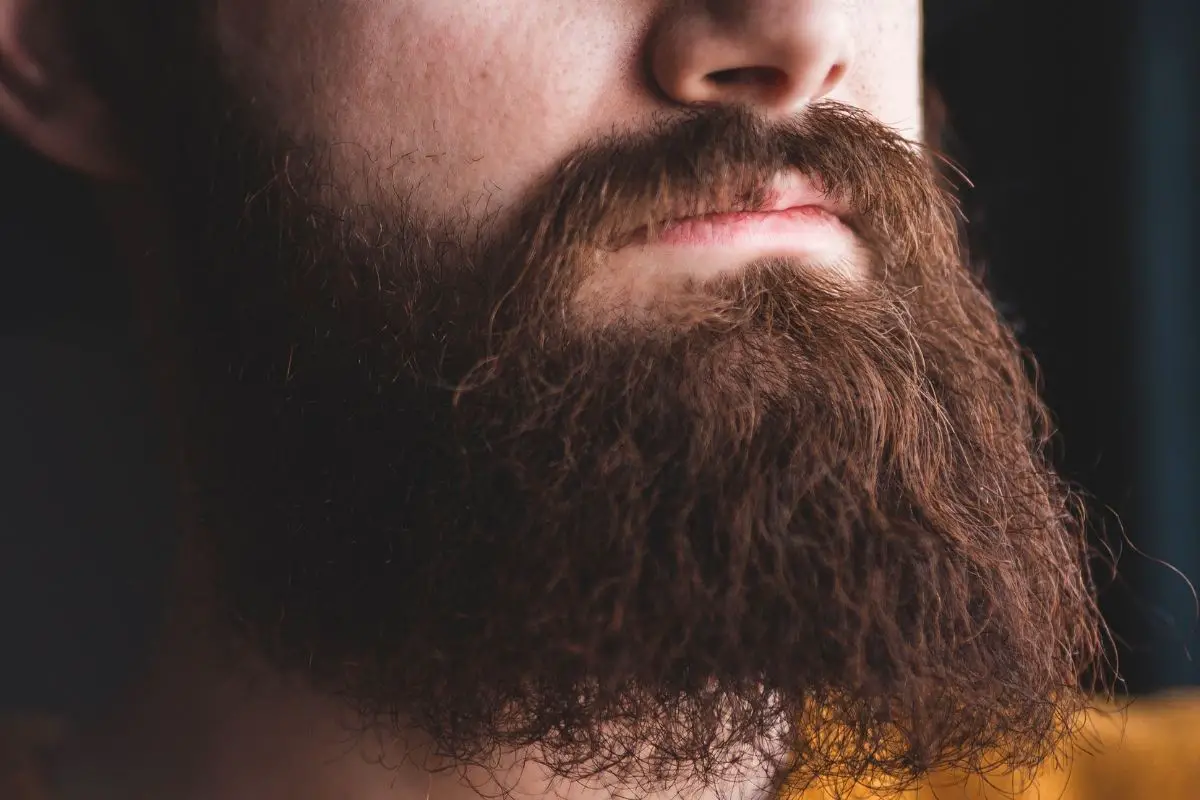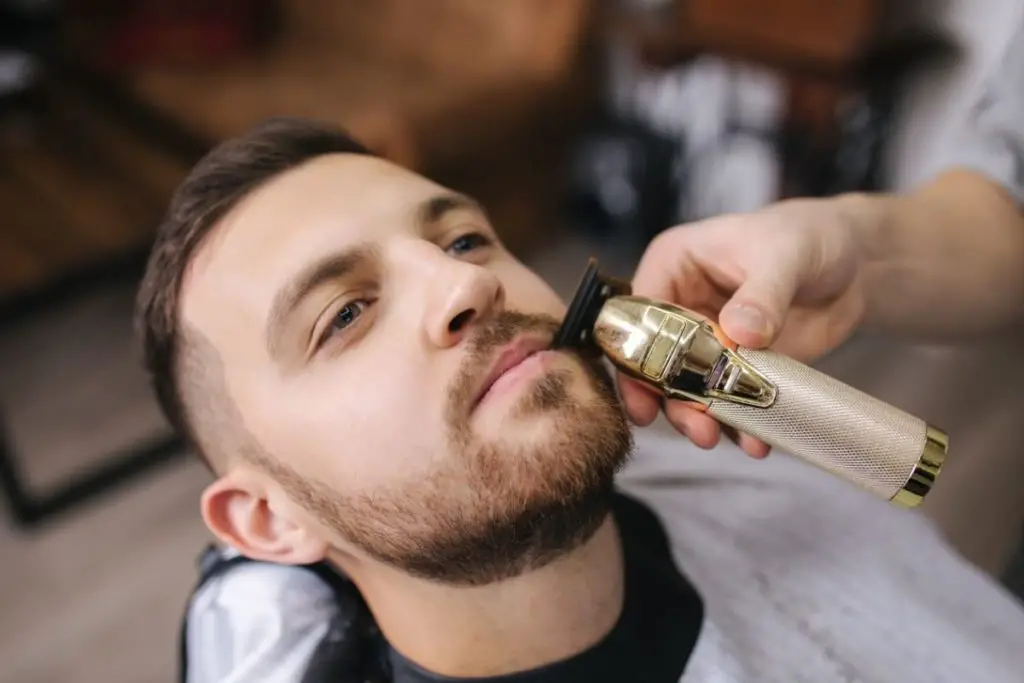Not everybody can grow a beard and, even if you can, it’s not always fast-growing and thick. Nobody likes a beard that’s patchy, straggly, or nonexistent, so maintaining a good beard is important for a lot of us guys.
If you’re growing your first beard, you may want some help too. Facial hair differs a lot and so we all need some help sometimes. Fortunately, there are at least ten different ways you can make your hair grow faster and stronger.
There are more than ten ways to encourage beard growth, of course, but a lot of it is noise and won’t work that well. At best, you’ll get inconsistent results and at worst, you’ll get scammed out of your hard-earned cash!
That’s why we have researched ten ways that are proven to work for your beard.
We haven’t just provided valuable info about all of these methods below, we have also included a breakdown of facial hair, how it grows, and factors that affect growth rate.
While we have some product recommendations, there isn’t one magical product that will help your hair grow – you’ll get the best results when you understand how facial hair grows and make lifestyle changes to support it.
Here you’ll learn to do the following things:
- Understand how facial hair is different from other hair.
- Learn the science behind facial hair growth rates.
- Learn the products, foods, and lifestyle changes that support faster and healthier beard growth.
Difference Between Head & Facial Hair
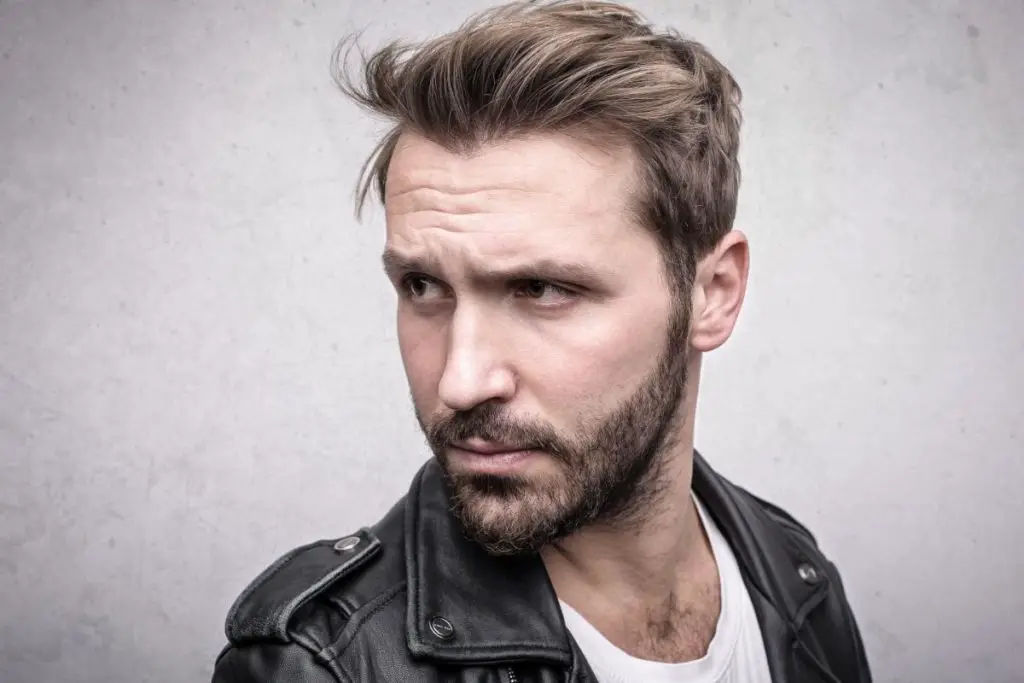
If you want to learn more about beard growth, you should first understand that head hair and facial hair are different. You probably knew that already – they do look and feel different after all – but this also changes how they react to hair products.
That’s why there are dedicated products to take care of your beard and other facial hair.
It’s not just some cottage industry that wants to squeeze extra cash out of bewhiskered beard owners, it’s a fact that using ordinary shampoo on your beard can be damaging.
So first, check out beard shampoo for washing and beard oil, balm, and/or butter for conditioning and shaping the beard. These are made with ingredients that are much healthier for facial hair and the skin that’s beneath it.
The skin on your face is obviously different from your scalp, which is partly why having dedicated beard products is better for your facial hair.
Facts About Hair
You may be concerned about your beard, but we don’t often consider the science behind our hair and how it grows.
If you’re here, you’ll want to know the facts about facial hair growth so you can turn them in your favor. Then you can figure out what you need to do to improve your beard growth – knowing is half the battle.
Let’s start at the very beginning. Your head hair grows very, very, very early into your development.
How early? Before you’re even born! Head hair is present when you’re just a fetus in the womb, as the hair follicles are developing. Most babies also grow hair in the womb and have it when they are born.
Facial and body hair is missing, however, this, all comes in much later. During puberty, a different kind of hair develops on the arms, legs, groin, chest, and face.
Some people don’t have much body hair at all, while others have a lot; it depends on genetics and other hormonal factors.
Some people sprout facial hair right out of the gate when puberty sets in, but most men weren’t bearded sixteen-year-olds.
Instead, beard hair is typically the last to come in, happening between 16 and 20 years old. Even then, some can’t grow much beard hair and don’t have full jaw coverage.
Factors Affecting Facial Hair Growth
So, which factors affect facial hair growth?
Here’s where we’ll get into some of the hormonal science that goes into beard growth. You don’t need to study for a test; just knowing key scientific details helps when you are pursuing a full beard.
Beard hair is androgenic, meaning that it is controlled by two hormones. You’ve no doubt heard of the first hormone – testosterone – while the second is a similar hormone called dihydrotestosterone.
The testosterone activates and stimulates facial hair follicles so that the hair starts growing in the first place. Dihydrotestosterone then controls the hair density, dictating how thick the beard will be.
Dihydrotestosterone is also a mouthful, which is why it’s commonly abbreviated to DHT.
Both are necessary for a healthy beard. You don’t just want to grow a fast beard that is patchy, do you?
You also want it to be a full, thick, and healthy-looking beard. If you have a deficiency with either of these hormones, you’ll have trouble growing a beard that looks good and covers most of your lower face.
All body hair is androgenic too – there are more similarities between your beard and chest hair than your beard and head hair. Because of the testosterone hormones involved in hair growth, men will generally have more of this hair than women.
Different Hair Types
Hair can be broken down into further categories, let’s take a look at them:
- Lanugo Hair – The temporary hair that babies have, which soon falls out after birth.
- Vellus Hair – This is the short, lighter hair that kids and teens have. It is typically lighter than adult hair too.
- Terminal Hair – This adult hair is longer, darker, and thicker than the vellus hair. During puberty, vellus hairs on the body are replaced by terminal androgenic hair.
Hair Growth Phases
Even within the different types of hair, there are multiple phases for hair growth. There are four phases, which include a shedding phase where the hair stops growing and falls out of its follicle.
Here are the four hair growth phases covered in more detail:
- Anagen – This is the longest phase, lasting two to seven years, where the hair follicles are connected to the bloodstream. As they become nourished by the blood, the hair grows.
- Catagen – This is a shorter phase where, only approximately ten days, the follicle shrinks to wrap itself around the hair. The hair detaches from the dermal papilla, which was its connection to the bloodstream.
- Telogen – This is a resting phase of about three months where older hair is inert, and new hair is preparing for growth. At any one moment, 10% to 20% of our hair is in this phase.
- Exogen – This is the last phase for every strand of hair on your body. It’s where the fully-rested hairs become detached from the follicle, falling out. In most cases, it is replaced by young hair that had been growing beneath it. In some other cases, the follicle doesn’t produce another hair at all.
While these processes can take many years for head hair, facial hair grows faster, and so this cycle can repeat itself in a matter of months. The speed and strength of this growth depend on how much testosterone the man has in him.
Everything we have covered above should reinforce one thing – your facial hair is not the same as your head hair and requires different treatments as a result. Get beard-friendly products and, if your beard is going to be longer, a beard comb/brush.
Factors Affecting Beard Growth Rate

Since you’re looking to increase your beard growth rate, you’ll need to know the factors that speed up or slow down the growing process. What does the normal beard growth rate look like?
A Normal Beard Growth Rate
As we have already said, our facial hair grows faster than the hair on our heads. That said, it grows at different speeds depending on some of the factors we have outlined below.
For the average person, facial hair can pass through its growth cycles in weeks or a month. If you shaved your head, however, then it can take months before the growth cycle kicks into gear.
If you were hoping for some numbers to chew on, then keep this in mind. For average facial hair, the growth rate is half an inch per month. You may grow faster or slower depending on other factors.
Age then causes the growth rates to slow down as men get older, as you’d expect.
Growth beard rate factors can be split into three categories, and we can only control some of them. We have already covered one of them in some detail, so this should be easy!
Genes
First, there is the factor that you cannot change – genes.
You already know how genes work; they are how certain qualities of your parents are passed to you. Hair color, for example, tends to run in families because of shared genes that promote brown, blonde, or red hair.
Well, along with the color of the hair, the amount of hair is also determined by genes. If your father has a lot of hair, there’s a much higher chance that you’ll have more hair, and it should be thicker too.
It’s not just the father’s side, however, as the grandfather and other men on the mother’s side may also give you hair-encouraging genes through your mother.
Unfortunately, this also means that a weak, patchy beard can run in the family.
If that’s the cause of your weak facial hair growth, there are some things you can do to salvage the situation. With that said, some people just can’t grow a beard, even with all the help in the world.
Hormones
Hormones are the next determining factor in facial hair growth. They’re also the factor that we have covered already, where testosterone and DHT regulate beard growth and the thickness of beard hair.
It’s not just testosterone and DHT that help with hair growth, however. Some men have a lot of testosterone but still struggle with growing a beard – why is that?
The answer is androgen receptors. Without androgen receptors, the testosterone that you do have will go unappreciated and it won’t have any effect on your hair growth.
When the hormones are detected by the androgen receptor, they will signal to your genes that beard hair needs to be produced. Without the receptors, the genes never get that signal.
Hormones aren’t as unchangeable as genes. Some people have hormonal imbalances that cause them to have more or fewer hormones, which can happen with testosterone.
While they’re a part of you and are often determined by your genes, it is possible to take supplements or treatments that can increase the hormones you have.
Any kind of hormonal therapy comes with side effects, however, and having too much testosterone in your system can be dangerous.
Blood Circulation
The next biggest factor that affects beard growth is your blood circulation.
If you remember, the first stage of hair growth is where the hair is connected to the walls of the hair follicle, using blood flow to grow properly.
As such, having great blood circulation is ideal for creating long, thick hairs contributing to a fuller, better beard.
Without good blood circulation, your hairs will be thinner and will easily fall out. In some places, you won’t grow any hair at all!
There isn’t much else to say about blood circulation for now – we have advice on how to improve blood circulation below.
Stimulating Beard Growth

That’s enough explanation for now – it’s time to talk about solutions.
As we have covered, your beard can come in anywhere between 16 and 30 years old. Everybody grows their beard at their own pace, dictated by the factors above, but there are ways to help it grow faster.
Even with the ten solutions that we have gathered below, you should remember that this is a process that needs time to work. No matter which methods you use, you should also have patience as it can take time to notice results.
When you do notice results, they may be a little less than you expected, but it’s still progress. It may take a while for you to get your dream beard once progress starts.
With that understood, let’s get into the things you need to do to get a great beard.
1. Eat Good Food
We have all heard the phrase “you are what you eat” and yes, it applies to facial hair too!
Think about it, our diets influence how healthy and hydrated our skin is and how strong our bones are. Like anything that grows in our bodies, what we eat influences our hair.
First, it helps if you live a fit and healthy lifestyle where you get your required nutrients and minerals without overeating. Eating healthily can stimulate hair growth hormones and result in faster, stronger beard growth.
Eating foods that contain a lot of fat and carbs can help produce more testosterone and DHT. So which foods are the best? Check out this list:
- Cinnamon – Eating more cinnamon helps your body carry more oxygen to the hair follicles, promoting stronger hair growth.
- Eggs – Everybody knows how protein-rich eggs are. They also contain biotin, which is part of the vitamin B family that regulates skin and hair health.
- Liver – The liver is also filled with biotin, along with iron which also helps to stimulate hair growth.
- Olive Oil – Olive oil can improve testosterone production and help facial hair growth. It’s also easy to work into your diet.
- Oyster – Oysters are full of zinc, yet another mineral that can improve the quality of your hair and cut down on growth time. They’re also a source of protein, to boot.
- Sweet Potatoes – Sweet potatoes (and many other orange vegetables) are full of beta-carotene. These are important for cell growth throughout the body because it’s converted into vitamin A. This can accelerate cell and hair growth.
Try working these into your diet. If you can’t eat some of these or you just can’t get your hands on them, take notes of the nutrients and try to find them elsewhere.
For growing beard hair, you should aim to have approximately 50% of your diet as carbohydrates. The rest is split between 30% of fats and 20% of protein.
2. Sleep Well & Stay Active
Part of staying fit and healthy isn’t just eating well, it’s sleeping well too. You should also stay active by getting regular physical activity.
Doing both of these will stimulate the hormones you need to grow beards while also increasing blood circulation, which further helps beard thickness.
All hormones, including testosterone, are more present in the body when you’re getting enough sleep.
Sleep isn’t just rest; it’s recalibrating and refreshing your body at a cellular level. So, if you don’t get enough of it, the glands in your body will be less efficient at producing hormones.
For most of us, enough sleep is between 7 and 10 hours.
As for exercising, any kind of exercise is great for your health. If you’re specifically exercising to improve your beard growth, you’ll want to focus on resistance exercising instead.
This is strength training, so you’ll want to get familiar with a set of dumbbells. These strengthen your bones and muscles and, in turn, your blood circulation.
3. Consider Minoxidil
When it comes to the products that are used to treat hair loss, minoxidil is up there. It doesn’t just help some people regrow hair at bald spots, it can also be used to improve the growth of facial hair by using the same chemical processes.
It does this by improving the blood supply to the follicles that produce and anchor the hair in place.
Some products also extend the growth phase of hair, meaning the hair is connected to the bloodstream for longer and gets longer and thicker as a result.
Minoxidil is very convenient, coming in both liquid and foam varieties. No matter which one you get, you should use it once every day, maybe twice in dire cases.
It may not be the primary use of minoxidil for head hair, but it does seem to bear results.
Unfortunately, it can also come with side effects like itching and general skin irritation, which can become a lot more disruptive when it’s on your face and not just the top of your head.
Remember that this is a treatment, so you should get your doctor’s blessing before you commit to using it.
It may cause issues with your skin due to another medication you’re taking or another outlying factor, which is why seeing your doctor is so crucial.
I’ve not personally tried it but I heard good things about Keeps Extra Strength Minoxidil for Men Topical Hair Growth Serum, 5%...
4. Embrace Supplements
When trying to get the nutrients that encourage hair growth, you should take a look at supplements.
These are a shortcut to getting all of the minerals you need for your hair to develop properly and stay healthy, without having to monitor your diet so closely.
You can get supplements for everything, from herbs to things like amino acids and testosterone. Beware of taking too much and ask a doctor or dietician for advice if you think you need it.
You should get enough vitamins too as they are actively used to maintain the skin, nails, and hair of your body. Biotin supplements are particularly effective at managing hair and promoting healthy hair growth as a result.
Any vitamin deficiencies should be addressed immediately as they will make it harder for you to grow a full and healthy beard.
Along with biotin, you should make sure you are getting enough of vitamins A, B, C, and E.
These are the primary vitamin groups that help with hair growth, among other things. While you’re stocking up, getting extra vitamin D isn’t so bad either.
Here’s a brief explanation of what these vitamin groups do:
- Vitamin A is an antioxidant that helps maintain the immune system, cell growth, and cell repair, all of which are important when growing hair.
- Vitamin B is important for processing proteins, fats, and carbohydrates in the body. Without it, hair won’t grow as fast.
- Vitamin C is another antioxidant that inhibits the damage that free radicals cause. It helps promote and regulate collagen production, which is necessary for healthy hair.
- Vitamin E is an antioxidant and anti-inflammatory that helps with the formation of red blood cells. This also stimulates collagen and keratin production and stops skin inflammation, all of which help maintain a beard.
5. Exfoliate Your Skin

The surface of your skin is very important when trying to grow hair. If your skin is too dry or is covered in layers of dead skin, hairs have to do more work before they sprout from your face.
It also promotes oil buildup that can get inside and disrupt hair follicles.
To avoid all of this, you should clean your face regularly and exfoliate to make sure that there is no dead skin left.
When washing, using warm water is best as it’ll help blood circulation reach the hair follicles, which makes hair grow faster as we have established.
6. Stop Ingrown Hair
An ingrown hair is where a strand of hair fails to penetrate the skin, causing a pimple or an uncomfortable inflammation. It stops the growth of your hair and, if it’s located on your face, it affects the quality of any facial hair that you’re trying to grow.
When you notice ingrown hair on your face, you need to get rid of it so that new hair can grow. The new hair shouldn’t get stuck again, allowing it to become a part of your newly formed beard.
Fortunately, there are a variety of products online that make it easier to remove and manage ingrown hairs without much pain.
7. Try Micro-Needling
Another product that you should try is a derma roller. As the name suggests, these are small devices that roll across the surface of your skin, where tiny needles stimulate it.
Doing this increases production of collagen and elastin in the skin, encouraging hair growth. This is because the brain registers the tiny needles as small injuries, even though they don’t hurt or cause any impairment.
It sends those repairing nutrients to fix the area and, by doing so, sends all the biological processes in the area into overdrive.
The stimulation also helps blood reach the face, so it aids blood circulation too. That results in healthier hair follicles and, as a result, better hair.
Here are some tips for when you use a derma roller:
- Choose a derma roller that has needles between 0.5 and 0.75 millimeters – anything longer risks deeper skin penetration and uncomfortable feelings. It also won’t encourage keratin production very well, you’ll just end up with scarring.
- Only use a derma roller once every few days, so you don’t cause too much damage to your face.
- Moisturize your face after using a derma roller. You can also use an anti-inflammatory cream in place of a moisturizer to soothe the skin and return it to normalcy, where it can start growing hairs again.
- Many of those who use minoxidil get better results with their derma rollers.
This is an excellent derma roller and beard growth kit from a trusted brand we use Striking Viking.
No products found.
8. Don’t Trim Your Beard Too Much
You may have heard that facial hair grows back stronger if you trim it regularly. You shouldn’t worry about this because over-trimming your beard will cause problems.
Occasionally timing your beard to avoid split ends is all you really need to do.
Trimming your beard won’t make it grow any faster and it could have the complete opposite effect.
While it may seem counterintuitive, trimming your beard is best after reaching the size you want.
Trimming it along the way will just make it seem like you’re not making any progress, which can cause some to give up on their beard aspirations early.
Trimming also won’t make it grow any faster or thicker – that’s a myth unless you’re a teenager sprouting your first chin hairs.
9. Get Eucalyptus Cream
There are many products that people will try to sell you for hair growth. If you get anything, it should be eucalyptus cream. It’s a cheap and easily found product that should be available at most superstores or online retailers.
Using it stimulates hair follicles, as does eucalyptus oil, after massaging them into your face. Once you’ve used eucalyptus, you should leave it to soak in for a few minutes and then wash your face clean. You should start to see results after a while.
You’re not going to see results immediately, so you shouldn’t see this or any other product as an instant cure-all for your beard woes.
However, in conjunction with the other things in this list, using eucalyptus cream should help instead of some miraculous hair growth serum you’ll find online.
10. Get Familiar With Oil & Balm
Along with eucalyptus, you should practice good beard grooming routines. This includes getting beard oil, beard balms, and a beard-friendly comb and brush, as we said before. They allow you to keep your beard clean and fresh.
Some prefer to make their own beard oil, which may be more cost-effective depending on where you live. Castor oil or peppermint oil are popular household ingredients that can be used to create your own beard oil.
Here’s a brief explanation of how you can make your own DIY beard oil:
- You’ll need a carrier oil as the base – this can be jojoba oil, coconut oil, and argan oil.
- Next, you’ll need an essential oil that helps hair like thyme, sandalwood, lavender, peppermint, rosemary, or tea tree. Whichever you get, they should be cold-pressed.
- You could also replace the essential oils with scent oils like bergamot, juniper, orange, lime, pine, cedarwood, or nutmeg oil.
Once you have everything, along with a bottle to store it in, you should follow these steps:
- Clean the small bottle you’re using.
- Use a dropper to measure three parts carrier oil to one essential oil.
- Add the essential oil to the carrier oil. You can mix the essential oil, so long as you stick to the three-part to one-part carrier-essential oil ratio.
- Screw the bottle lid and shake it to emulsify the oils together.
- The oil should now be ready to use after washing your beard!
Extra Tips For Beard Growth

As we near the end of this guide on stimulating beard growth, you should keep these extra tips in mind:
- Stress, which is caused by the stress hormone cortisol, reduces the testosterone and DHT in your system. If stress is a problem in your life, it could be getting in the way of your beard! Stress is unavoidable in life sometimes, though things like exercise and mindfulness techniques can keep your mind and body calm. By reducing cortisol in your system, you should produce more testosterone.
- Eat right by putting eucalyptus, peppermint, and olive oil into your diet plans. Try to get ample amounts of vitamin A, E, boron, magnesium, and zinc in your foods.
- Drinking too much alcohol will also suppress testosterone and lead to a whole lot of other medical conditions in your life. Occasional social drinking is fine, avoid drinking to excess regularly.
- Stay away from harsh chemicals that aren’t friendly to hair. While facial hair is hardier than our head hair in some ways, you shouldn’t put your beard through the wringer by using products that will knock your sebum and keratin levels off balance.
- Likewise, some cosmetic products are anti-androgenic, limiting how much testosterone and other male hormones reach your hair. Check any medications and cosmetics that you use to see if they have anti-androgenic qualities.
- Avoid soap-washing your beard too often, it can strip away natural oils and substances that help hair growth. While showering or bathing throughout the week, water rinsing should be fine, and use soap/shampoo three times per week at a maximum. Beard shampoo is better than kinds made for your head hair.
- Try not to use hairdryers and other heated implements on your beard, it’ll slow the growth rate and you risk damaging your hair. Use beard balm or butter to style your hair instead.
- Lastly, as we said, don’t trim your hair too often. Your hair growth rate is mostly decided by genetics, so that’s more important than whether you trim your hair often or not, and it can even harm your hair growth. Instead, focus on what nutrients you’re taking into your body and how strong your blood circulation is.
Conclusion
With that, you have reached the end of our comprehensive guide to stimulating beard growth. I learned a lot while researching these 10 ways to stimulate beard growth faster.
By using the information in this guide, you should be able to achieve a faster beard growth rate, and the beard that you can grow will be thicker and healthier looking!
It may take some time to see results but, by sticking to some of the hair-friendly habits included above, you’ll be on the right track. Eat right and use the right products; you should start seeing results quickly.
- Best Beards For Fat Guys – From Personal Experience - March 31, 2023
- Best Beards For A Rectangle Face Shape - March 31, 2023
- Best Beard For Diamond Shaped Face – Top Choices - March 31, 2023
Last update on 2025-06-20 / Affiliate links / Images from Amazon Product Advertising API
